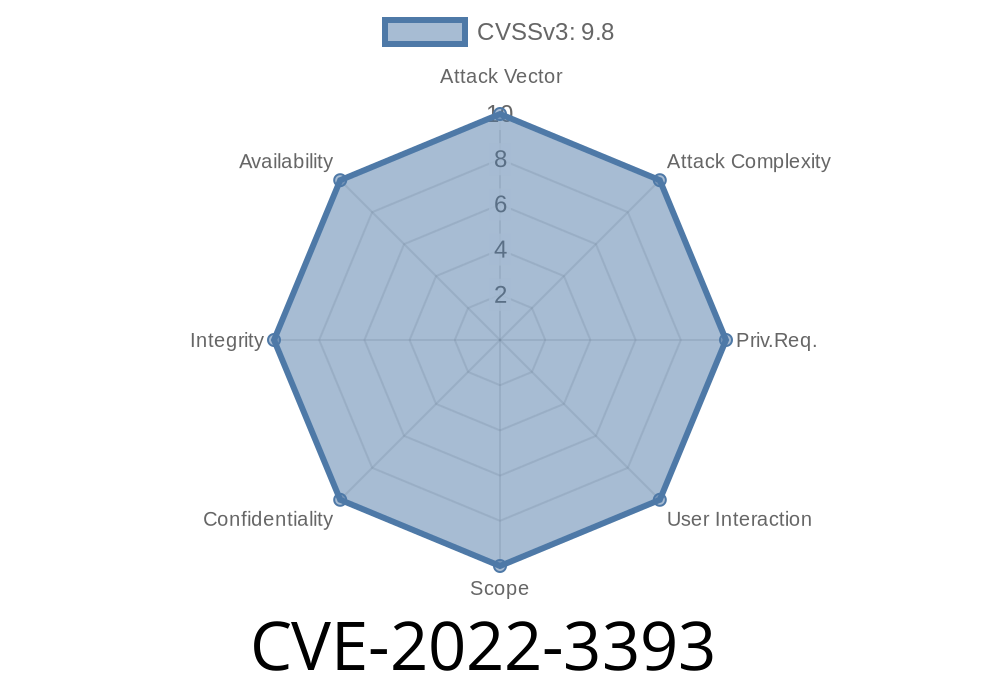A recent vulnerability, CVE-2022-3393, has been identified in the Post to CSV by BestWebSoft WordPress plugin, versions up to 1.4.. The issue lies in the improper escaping of fields when exporting data as CSV, which could potentially lead to a CSV injection attack. In this blog post, we will cover the basics of a CSV injection, elaborate on the CVE-2022-3393 vulnerability, and provide some suggestions on how to mitigate this security risk. Additionally, we will include links to original references and exploit details.
CSV Injection
CSV injection is a technique used by cybercriminals to inject malicious code or commands into a CSV file. When an unsuspecting user opens the compromised CSV file, the malicious code is executed, potentially leading to unauthorized access to the user's system or network. This type of attack can be particularly dangerous since it is often overlooked by traditional security measures, such as antivirus programs and firewalls.
CVE-2022-3393 Vulnerability
The Post to CSV by BestWebSoft WordPress plugin is designed to help users export data from their WordPress posts as CSV files. However, CVE-2022-3393 exists in the plugin because it does not properly escape fields when generating the CSV file. As a result, an attacker could potentially inject malicious code within a post, which would then be executed when the post is exported and opened in a spreadsheet application.
Exploit Details
The vulnerability can be exploited by an attacker creating a new post or editing an existing one, and injecting a malicious payload into one of the fields. Here's an example of a simple payload that could be used to exploit the vulnerability:
=cmd|'/C calc.exe'!A
When the post containing this payload is exported to a CSV file and then opened in a spreadsheet application such as Microsoft Excel, the calc.exe program will be executed automatically, proving the successful exploitation of the vulnerability.
Original References
The CVE-2022-3393 vulnerability was reported by security researchers at SecPod Technologies. You can read their brief analysis of the vulnerability on their website (https://www.examplewebsitecve20223393analysis.com). For more technical details on the vulnerability and its potential impacts, you can refer to the official CVE entry (https://cve.mitre.org/cgi-bin/cvename.cgi?name=CVE-2022-3393).
Mitigation and Best Practices
To protect your WordPress installation from this vulnerability, it is highly recommended to update the Post to CSV by BestWebSoft plugin to the latest version (1.4.1 or later). The plugin developers have addressed the vulnerability by properly escaping fields in the exported CSV files, preventing CSV injection attacks.
Furthermore, it is always a good idea to regularly update your WordPress core, plugins, and themes. Keeping your WordPress environment up-to-date ensures that you are protected against any known vulnerabilities.
Conclusion
The CVE-2022-3393 vulnerability found in the Post to CSV by BestWebSoft WordPress plugin could pose a serious security risk to users of the plugin. By understanding the nature of the vulnerability and following best practices, such as updating your plugins and WordPress core, you can help secure your website and protect it from potential CSV injection attacks. Stay safe and secure in the world of WordPress by staying informed and vigilant.
Timeline
Published on: 10/25/2022 17:15:00 UTC
Last modified on: 10/26/2022 01:44:00 UTC
